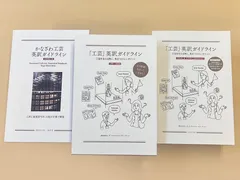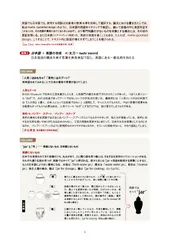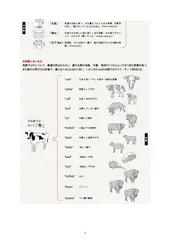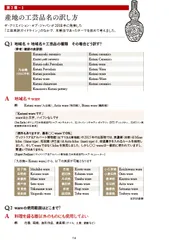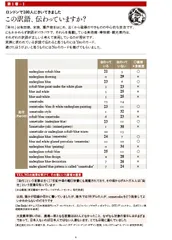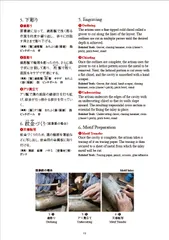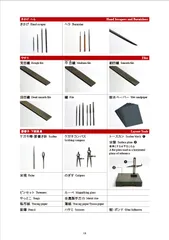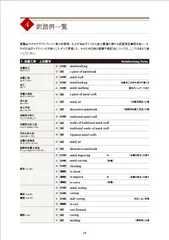Three types of "Guidelines for English Translation of Japanese Crafts" to be released at the end of July 2023 to promote Japanese crafts overseas in an easy-to-understand manner.
To convey the essence of the charm of Japanese culture
一般社団法人ザ・クリエイション・オブ・ジャパン
On July 28, The Creation of Japan Inc. will publish the "Craft English Translation Guidelines," a series of booklets designed to provide English translation know-how that will enable Japanese craftspeople to more accurately convey the appeal of Japanese crafts to overseas audiences.
The "Craft English Translation Guidelines" series is designed to systematically consider the various issues necessary to ensure that English translations are easy to understand, and to make them practically useful.
The first volume, "Ceramics, Lacquer, and Crafts of Ishikawa Prefecture," the second volume, "Preparation and Basics," and the special volume, "Kaga Metal Inlay," were made available to the public as free downloadable PDF versions on our website.
In response to many requests, we have decided to publish an A5 size booklet as an easier-to-read printed version.
Background of Development
Interest in Japanese culture is increasing in foreign countries in line with the expansion of inbound tourism. In addition to urban areas such as Tokyo and Osaka, people are now paying attention to local lifestyles and culture, as well as to kimono, lacquer, pottery, and other crafts that make use of natural materials from the region.
However, the terminology used to describe the characteristics of these crafts is unfamiliar even to people living in modern Japan, and it is even more difficult to translate. Therefore, there are many cases where words are directly translated or Japanese sounds are simply Roman characters. This is a common practice that does not convey the correct meaning of the words. This not only fails to convey the correct meaning of the words, but also prevents people from fully understanding the appeal of crafts, and in some cases, may even cause them to lose interest. Even if a craft is of interest, it is misunderstood because of the translation, resulting in cultural and economic loss.
The Creation of Japan (Tokyo), an intermediary support organization for Japanese crafts, considers this to be an urgent issue for crafts inbound, and has been working on this issue for the past six years with the cooperation of experts from Japan and abroad.
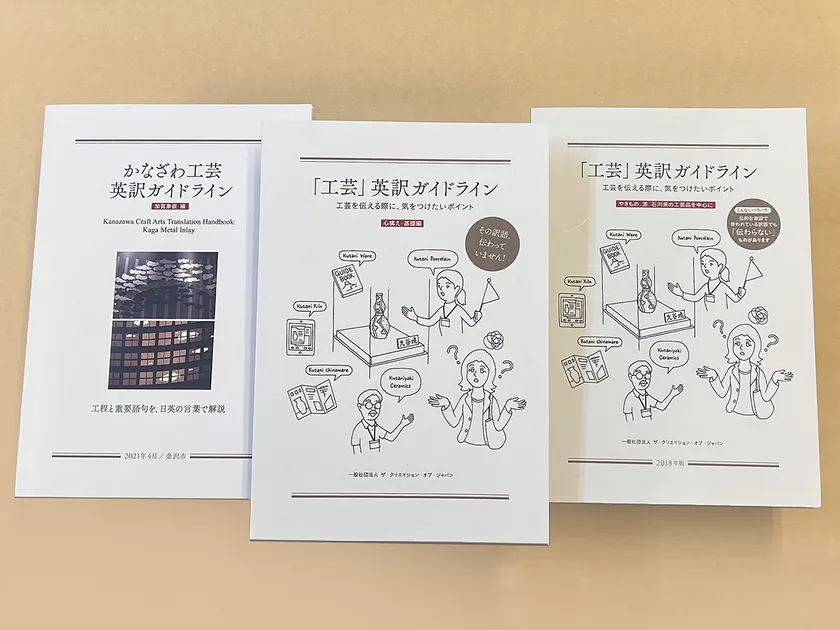
Guidelines for English Translation of Crafts
[Target audience]
People involved in crafts
Cultural facilities such as museums and traditional crafts museums, and sales in the field of crafts.
People involved in business, tourism, and crafts.
People involved in the translation of Japanese crafts into English
Multilingualization staff, translators, interpreters, guides, etc.
Japanese speakers in English-speaking countries who are interested in Japanese crafts.
Designers who actually design and layout catalogs, guidebooks, flyers, and websites in both Japanese and English. Persons in charge of checking the content, editors.
[A5 booklet editions are published.]
We will begin selling an A5 size booklet edition that shows the problem of translation of crafts from various angles and provides clues to solving the problem.
The handy A5 size print version costs 2,000 yen per booklet. All PDF versions are available for free download on The Creation of Japan website.
The print version is highly recommended for craftspeople, industry and art professionals, multilingual cultural heritage workers, and interpreter guides.
If you would like to purchase a copy, please send an e-mail to the address below with the name of the booklet you would like to purchase, your name, mailing address, and e-mail address (or phone number). We will send it to you by mail.
Mail: info@takagamine.jp
[Points of interest]
Part 1: "Focusing on pottery, lacquer, and crafts of Ishikawa Prefecture:
"Understanding the issues" = Examples of disparate translations found in official literature and websites. It presents ideas on how to deal with this problem, including the fact that some commonly used English translations are "difficult to convey" or "not appropriate" for English speakers. At the end of the book, a list of translations that require special attention is included.
Part 2: "Prepare yourself, the basics."
"Understanding foreign reactions" = Which words are understood and which are not. Examines the problems that arise when translating words in the field of crafts into English. The basics of minimum English spelling rules, such as capitalization, hyphenation, etc., are organized, with a viewpoint from an English speaker. Contains basic words (e.g., names of crafts) necessary for introducing Japanese crafts.
Special Edition "Kaga Metal Inlay"
Contains English expressions that serve as recommended translations of terms used to describe Kaga Metal Inlay, a type of metalworking, and a practical target translation table. The contents include bilingual Japanese-English explanations of the production process and other information to deepen understanding of kinko-zogan itself. Definitions of processes and terms in Japanese, which vary by region and generation, have been defined through interviews with artists and craftspeople. This is a joint compilation with Kanazawa City.
Using this book as a role model, we are looking for collaborators for future editions such as Ceramics and "Kimono / Dyeing and Weaving".
[Examples of questions]
The "Japanese language is used to describe the crafts, but the lack of recognition and knowledge of the crafts in other countries leads people to try to memorize them in Japanese.
(Romajiization of Japanese)" → Unintelligible strings of characters that look like incantations to English speakers are created.
Example: Steped Kiln, Underglaze cobalt blue
Many English translations are written at the level of "it's safe as long as it's written in the alphabet," and no attention is paid to whether or not it can be conveyed properly.
→(Embarrassing misspellings, incorrect use of symbols and spaces, etc.)
There is a lack of understanding of the difference between English and Japanese in terms of language system and classification.
→Translation is done word-for-word, resulting in a translation that is far removed from the original meaning.
Many different translations are created even though they are originally the same.
→For English speakers, it is not clear whether they are referring to the same thing or different things.
For example, Kutaniyaki = Kutaniyaki ceramics, Kutani-yaki ceramics,
Kutani Porcelain, Kutani-yaki porcelain, Kutani-yaki porcelain,
Kutani Porcelain, Kutani ware, Kanazawa Kutani pottery,
Kutani Ceramics, Kutani Ware, Kutani-Ware, Kutani ceramics,
Kutani-Yaki Porcelain, Kutani-yaki Porcelain, Kutani ware,
Kutani porcelain, Kutani-ware, Kutani chinaware, Kutani ceramics
Kiln, Studio, Pottery, Gama, Gama-kiln, Tobo
The name of a former clan, a product bearing the clan's name, or a proper noun such as the name of an institution during the Edo period are simply written in romanized form.
→Almost impossible for English speakers without special knowledge of historical and cultural backgrounds to understand.
First "KOGEI" English translation guideline
Focusing on pottery, lacquer, and crafts of Ishikawa Prefecture ─ So many pieces! English translation of "Crafts
[Table of Contents]
1 How to translate the unique techniques and materials of Japan
2 How to translate "-yaki" and "-nuri" (lacquer ware) Crafts that are regional specialties
3 How do you translate "I am a master"?
4 How to indicate the name of a work, its author, period, and collection.
5 How to use phonetic symbols (hyphen, macron).
6 How to say "Kogei" in English Kogei and Craft
7 Examples of English translations of Kogei terms that do not convey the meaning of the word "Kogei" and "Craft
8 Materials at the end of the book
From "How English explanations of cultural properties should be provided" (July, 2008)
Guidelines for Improving and Strengthening Multilingual Support toward Realization of a Tourism Nation" (March 2014)
(March 2014, Japan Tourism Agency)
List of catalogs, books, and websites referred to in preparing the guidelines
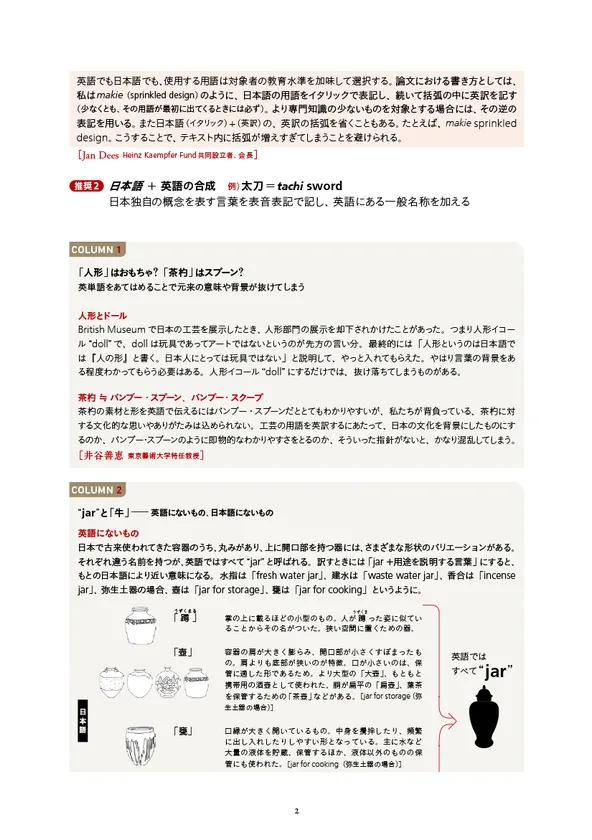
First bullet point: content example 1
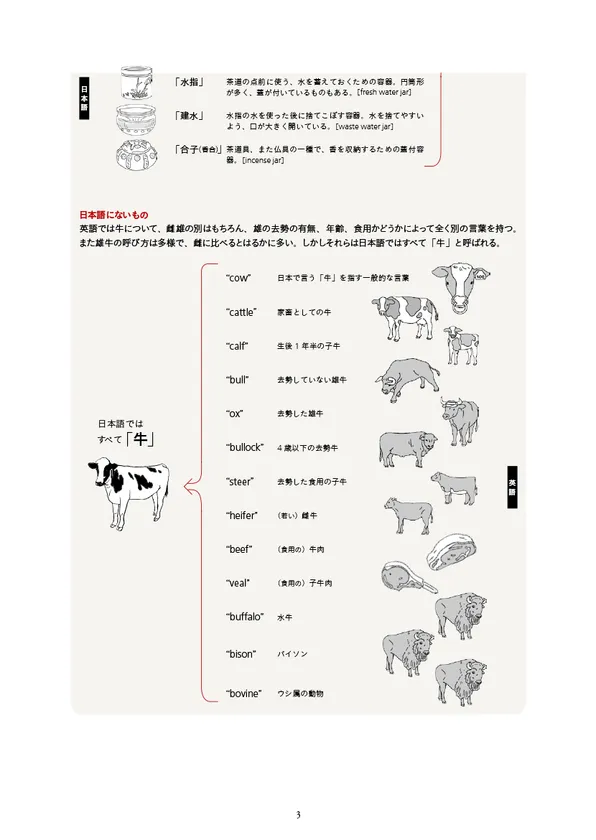
Volume 1 Content Example 2

Vol.1 Download PDF version
Vol.2 "Crafts" English Translation Guideline
Preparation and Basics - The translation is not conveyed! Contents
[Table of Contents]
Chapter 1 English Translation of Japanese KOGEI from Foreign Perspectives
1 We asked 100 people in London / Is this translation understood?
2 100 People in London / Visiting production sites from the viewpoint of a tourist visiting Japan
3 We asked experts in London / Which translation is appropriate for a national treasure tea bowl?
4 Let's recognize that "it has not been handed down
Reference material Lecture "Japanese Crafts and Issues in Translation
Chapter 2: Craft Terms and the Basics of English Translation
1 How to translate the names of local crafts
2 The concept of "type" and "style
3 Words whose meanings are used differently in Japanese and foreign countries
Reference material Symposium "Toward the Creation of Common Rules for English Translation of Crafts" (in Japanese)
Chapter 3: Notation Basics
1 Basics of English notation
2 How to translate the names of materials and techniques unique to Japanese crafts?
How to handle Japanese (romaji notation) in reference material English texts
3 Learn from SWET (Society of Writers, Editors, and Translators)
Six rules" for fonts and hyphens
4 Learn from SWET (Society of Writers, Editors, and Translators)
The "all-caps" problem
Chapter 4: Preparation for Japanese-to-English translation and websites to refer to
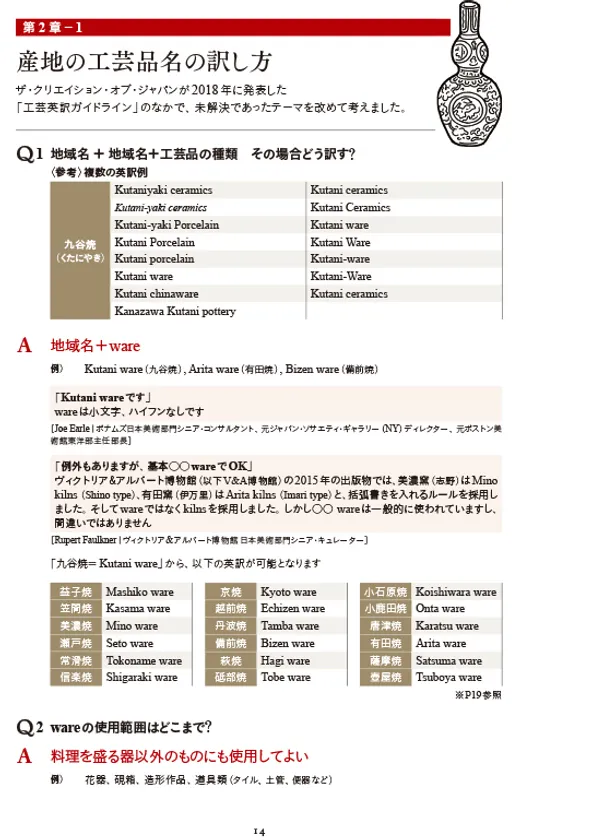
Part 2 Content Example 1
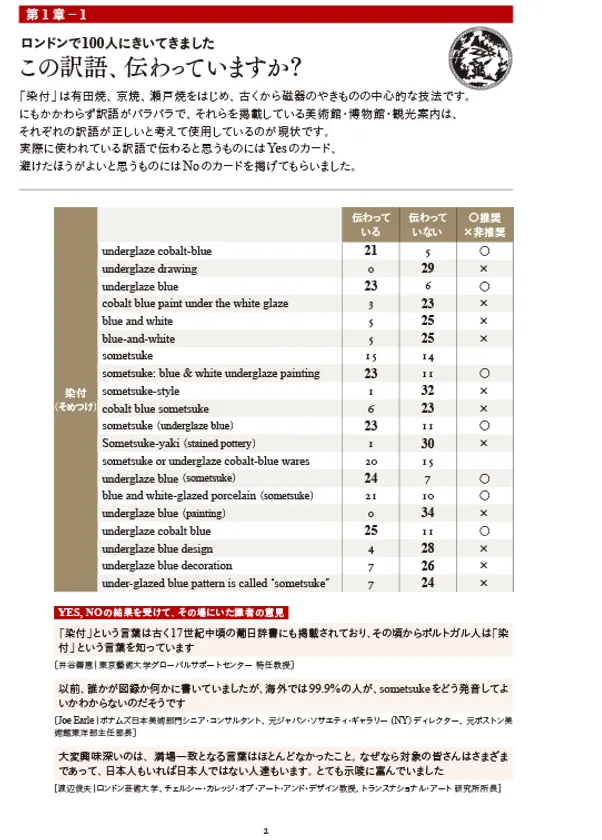
Volume 2 Content Example 2

Vol.2 Download PDF version
Special Edition Kanazawa Kogei English Translation Guidelines
Kaga Metal Inlay
[Table of Contents]
Chapter 1 What is Kaga Metal Inlay?
Chapter 2: How Kaga Metal Inlay is made
Chapter 3: Guide to Metal Inlay Terminology
Chapter 4 List of Examples of Translations
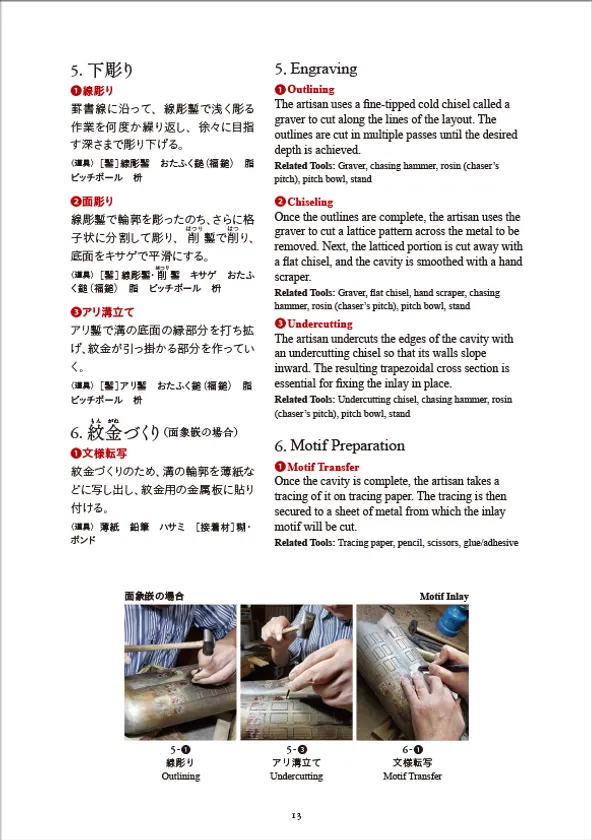
Special Contents 1

Special Contents 2
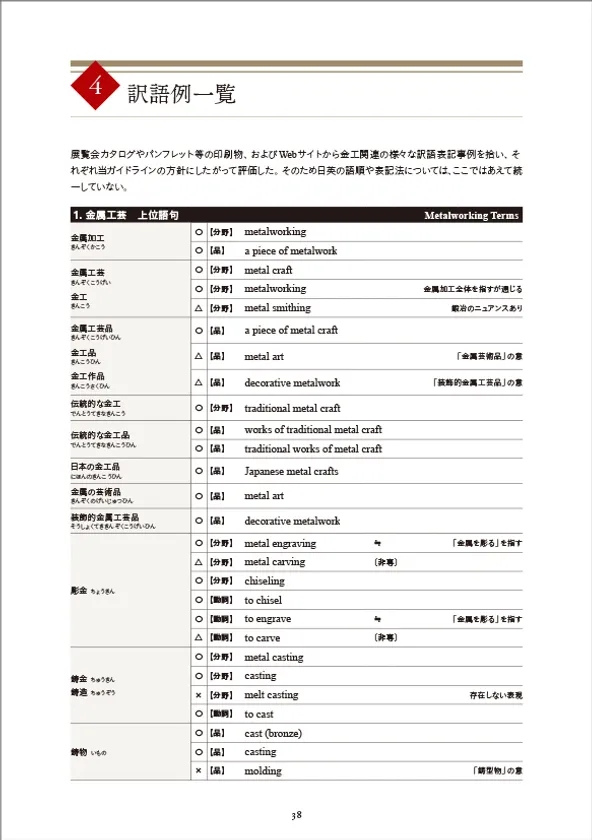
Special Contents 3

Download the PDF version of the special section
[Future Development]
The English population is estimated to be 1.5 billion, or one-fifth of the world's 7.3 billion people, while the Japanese population is said to be 125 million. It is essential that information be conveyed in English. In order for information on Japanese crafts to reach a wider audience and to gain a fair reputation in the future, it is necessary to reexamine, categorize, and organize the language in each of the priority fields. If we can establish a cooperative framework with artisans, researchers, and other appropriate specialists, it will be possible to create a bilingual table for a single field in three years.
Crafts are one of the major tourism contents and are directly related to the local economy. We believe that now is the time to develop the language infrastructure as an important project for the future promotion of international cultural exchange, tourism, and commerce. We are looking for many collaborators and supporters to compile Ceramics and "Kimono / Dyeing" editions in the future.
- Category:
- Services
